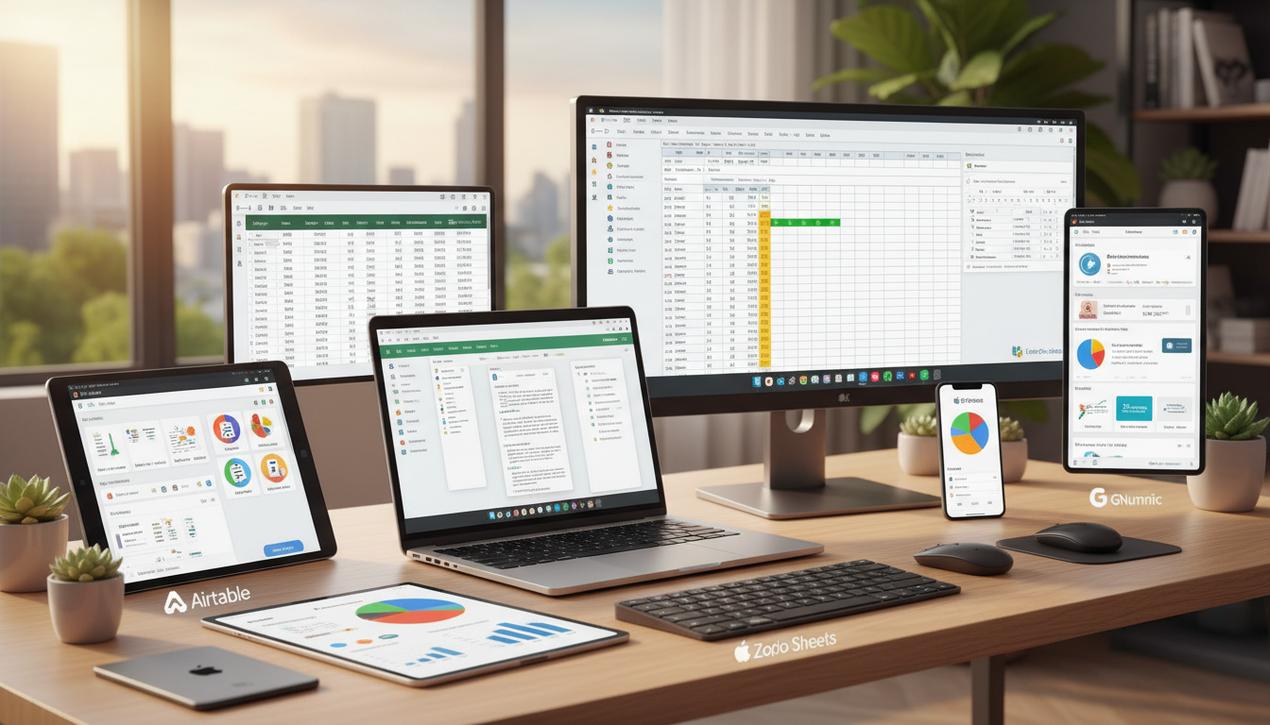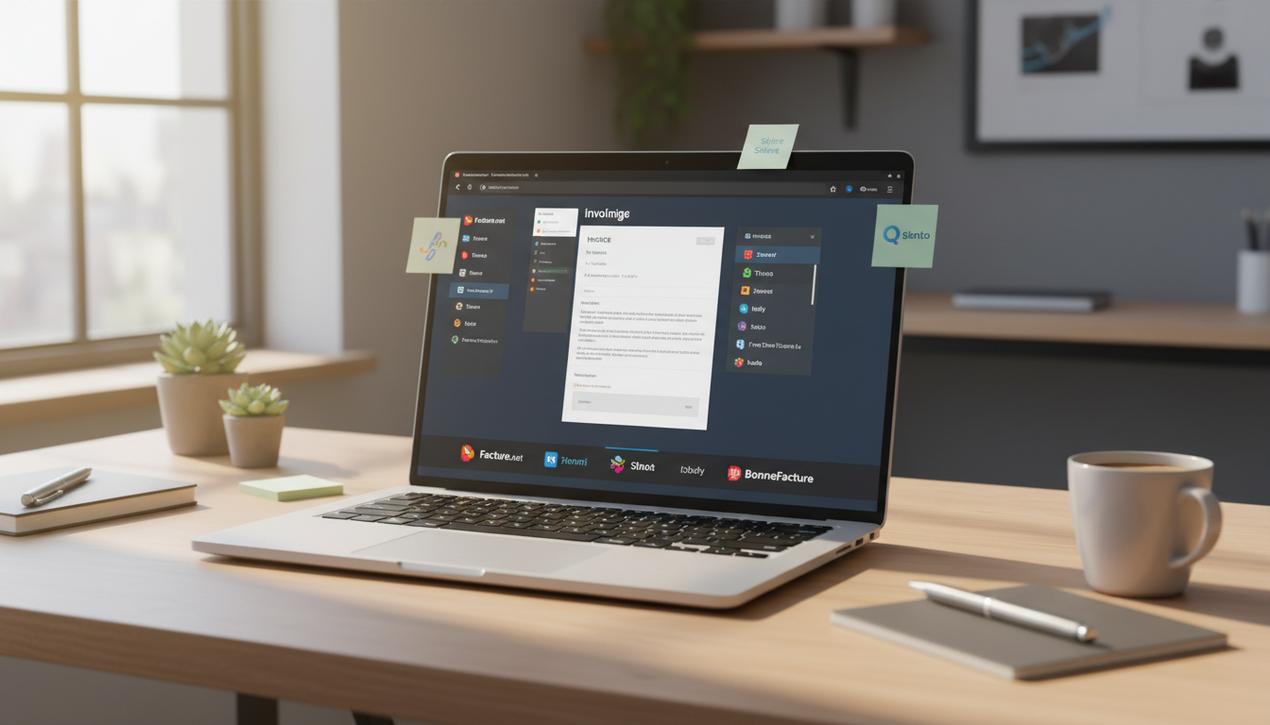Top 7 Free Excel Alternatives for 2025


Long considered the undisputed king of spreadsheets, Microsoft Excel is facing increasingly serious competition. In 2025, the SaaS software market is projected to grow by over 17%, with businesses and freelancers adopting more agile, collaborative, and cost-effective tools. While Excel’s power is undeniable, its cost and desktop-centric approach no longer meet everyone’s needs. Fortunately, the productivity software ecosystem has exploded, offering robust and free alternatives. These new solutions, often cloud-based, emphasize real-time collaboration and accessibility—criteria that have become essential for modern project management. This article explores the seven best free Excel alternatives to boost your productivity without breaking your budget.
Why Look for an Excel Alternative?
The need to move beyond Excel stems from several key factors shaping modern work. The first is the cost of a Microsoft 365 license, which can be a significant barrier for freelancers, small businesses, and students. The second is the demand for real-time collaboration. Distributed teams need tools that allow multiple users to edit a document simultaneously, a feature where cloud-based solutions naturally excel. Finally, multi-platform accessibility has become the norm; being able to view and modify a spreadsheet from a smartphone or tablet is a major advantage. These evolving expectations have paved the way for innovative competitors that better address these specific use cases.
The 7 Best Free Alternatives to Excel in 2025
The free spreadsheet market is rich and diverse. Each solution offers unique advantages, catering to different user profiles, from beginners to seasoned data analysts. Here is our selection of the top-performing tools for this year.
1. Google Sheets: The Collaborative Standard
It’s impossible to discuss alternatives without mentioning Google Sheets. Completely free with a Google account, it has become the gold standard for teamwork. Its interface, very similar to Excel’s, ensures an almost instantaneous learning curve. Its true strength lies in its seamless collaborative features: link sharing, comments, and real-time co-editing. As a cloud service, it eliminates file version issues, and everything is saved automatically.
- Storage and Access: Perfect integration with Google Drive for access from any device.
- Advanced Features: Supports complex functions, pivot tables, and scripts via Google Apps Script.
- Ecosystem: Easily connects to thousands of other applications through native integrations or tools like Zapier.
2. LibreOffice Calc: The Power of Open-Source
For those who prefer a complete, offline desktop solution, LibreOffice Calc is the most mature open-source alternative. As part of the LibreOffice suite, it replicates nearly all of Excel’s functionalities. Its interface, though less modern, is familiar and effective. Calc is particularly valued for its robustness in handling large volumes of data and its extensive compatibility with Microsoft file formats, including .xlsx. Much like the many alternatives to PowerPoint, this software suite offers a complete ecosystem.
- Compatibility: Opens and saves files in Excel format without major layout issues.
- Features: Offers pivot tables, a solver, and numerous statistical functions.
- Privacy: As a desktop software, your data stays on your computer, a plus for sensitive information.
3. Zoho Sheet: Artificial Intelligence for Data
Zoho Sheet stands out with its integration of artificial intelligence tools to simplify data analysis. Like Google Sheets, it’s a cloud application focused on collaboration. Its star feature, “Zia,” acts as a data assistant capable of cleaning information, removing duplicates, and automatically suggesting relevant charts and pivot tables. Cell locking is also a very useful feature for teamwork.
- Assisted Data Analysis: AI makes it easier to visualize and interpret data.
- Secure Collaboration: Granular permissions and cell locking to protect critical information.
- Complete History: Automatic saving and version history to restore previous document states.
4. Numbers: Apple’s Elegance and Simplicity
Pre-installed on all Macs, iPhones, and iPads, Numbers is Apple’s answer to Excel. Its approach is radically different: instead of an infinite grid, you start with a blank canvas where you can place multiple tables, charts, and images. This flexibility makes it ideal for creating visually striking reports and personal dashboards. Real-time collaboration is also possible with other Apple ecosystem users via iCloud.
- Design and Visualization: High-quality chart creation tools and templates.
- Ease of Use: Intuitive and clean interface, perfect for less technical users.
- Compatibility: Can export files in Excel format to collaborate with PC users.
5. Airtable: When a Spreadsheet Becomes a Database
Airtable redefines the concept of a spreadsheet by merging it with a relational database. Its free version is extremely generous and allows for managing complex projects. Each cell can hold much more than text or numbers: attachments, checkboxes, dropdown lists, etc. It’s the perfect tool for creating editorial calendars, tracking candidates, or simple CRMs, often complementing the best note-taking apps for organization.
- Rich Fields: Manage complex data far beyond the capabilities of a traditional spreadsheet.
- Multiple Views: Visualize your data from different angles without changing its structure.
- Automation: Integrates automation tools to simplify workflows.
6. GNumeric: Performance Above All
GNumeric is an open-source solution that focuses on lightness and precision. Less known to the general public, this software is renowned for its speed and low resource consumption, making it an excellent choice for older computers or for handling very large files. It prioritizes the accuracy of statistical and financial calculations, sometimes surpassing Excel in this area. Its interface is minimalist, but all essential functions are present.
- Lightweight and Fast: Ideal for modest hardware setups.
- Calculation Accuracy: Very reliable for statistical and scientific analyses.
- Compatibility: Manages Excel files perfectly but is primarily available on Linux systems.
7. Rows: The Next-Generation Spreadsheet
Rows is a modern alternative that natively integrates connectors to third-party services. It allows you to pull data from platforms like Google Analytics, Stripe, or social media directly into your cells. Its interface is designed to be shared and presented professionally. Rows also incorporates AI features to automate data analysis and report generation. It is a powerful tool for marketing, sales, or finance teams.
- Native Integrations: Connect your data sources without needing to code.
- Easy Sharing: Create interactive and attractive reports to share with a simple link.
- Artificial Intelligence: Automate data analysis and extraction tasks.
Beyond Free: Powerful Freemium Options
When needs become more complex, free versions can show their limits in terms of storage, number of users, or advanced features. Solutions like Jira are essential for agile project management with roadmaps and Scrum boards. Smartsheet uses a spreadsheet interface to offer a complete project management tool with Gantt charts and advanced automations. Finally, the paid versions of Airtable unlock automation capabilities and extensions that transform your simple spreadsheet into a true business application.
How to Choose the Right Spreadsheet for Your Needs
The best spreadsheet is the one that fits your use case. To make the right choice, evaluate your needs based on several criteria. If collaboration is your absolute priority, Google Sheets or Zoho Sheet are obvious choices. For complex data analysis and intensive local calculations, LibreOffice Calc remains a solid bet. If you need to manage projects and structured data, Airtable is unparalleled. Finally, for creating visual reports, Numbers offers an unmatched user experience. Take the time to test two or three of these options to see which one best fits your workflow.
The spreadsheet landscape has evolved considerably. While Excel remains a benchmark, it is no longer the only viable solution. The shift to the cloud has fostered the emergence of free, collaborative, and often more innovative alternatives. Whether you are a solo entrepreneur, a growing team, or simply looking for a more flexible tool, there is a free Excel alternative today that is perfectly suited to your needs. The future of spreadsheets promises to be even smarter, with increasing AI integration to automate not only calculations but also analysis and decision-making.




